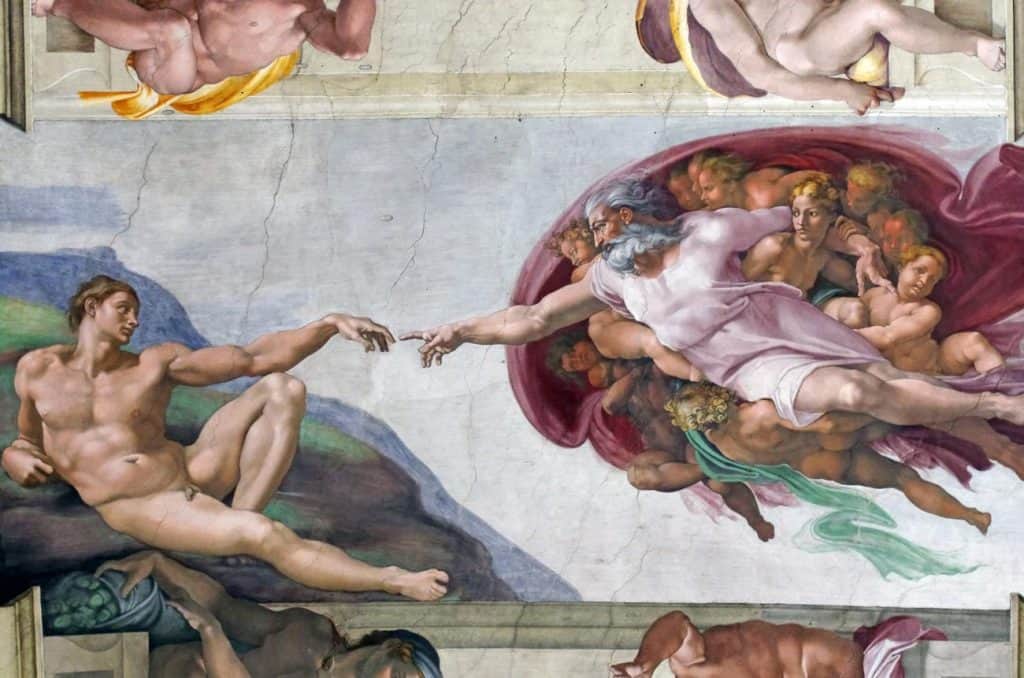If people are made in the image of God, why do we all look so different? Is there a race that most resembles God, and if so which one? Sadly, questions such as these—and their engineered answers—have led people to disdain—even mistreat—members of different ethnicities.
Instead of relying on our assumptions and doing more damage to each other, let’s see how the Bible answers the question: Is God black or white, or is He a different race altogether?
God transcends race and is neither black nor white. God made all of humanity in His image, and people of all races—individually and collectively—reflect our Creator’s image.

God and Race
God created humans as a single race in His image (Genesis 1:27). Just as scripture does not indicate Adam and Eve’s skin tone, it is equally silent on any racial characteristics that might be attributable to God.
Because all people of all races are descendants of Adam and Eve, all races are equal bearers of God’s image. To suggest that God is either black or white—or any other shade—is to suggest that only people of a certain race truly reflect God’s image. There is no Biblical basis to support such a notion.
The Origin of Human Races
In the earliest chapters of the Bible, we do not see any indication that people are identified or classified as ethnic groups (the Nephilim of Genesis 6 are believed to be creatures of angelic origin, and not human). The concept of races—called nations in the Bible—doesn’t emerge until after the flood and the fall of the tower of Babel.
After the flood, Noah’s family settled where they found themselves and as the population grew, so did the settlement. But God had instructed humans to multiply and fill the earth (Genesis 1:28), so He dispersed them from Babel (Genesis 11:8) so that they would spread throughout the world.
If you’ve read our article about evolution, then you are familiar with how God codes genes to express a diversity of physical characteristics. This is just as true of people as it is of animals. So as people spread across the earth and became isolated from one another, different physical expressions emerged among different nations.
All races and nations trace their lineage back to one of Noah’s three sons. Genesis 10 lists the second and third generations of Noah’s sons in detail. Here are some notable descendants of each:
- Japheth: European (Ashkenaz) and Slavic (Magog) peoples are descended from Japheth. Verse 5 also indicates that Japheth is the father of ‘maritime’ (Mediterranean) nations.
- Ham: Africans, such as the people of Egypt, Cush, and Sheba are descendants of Ham.
- Shem: The word ‘Semitic’ originates from Shem, who is the father of the Israelites (through Eber) and other Semitic and Mesopotamian people, including many nations that feature prominently in the Old Testament, such as Elam and Aram.
This is where we first see people groups that are physically distinguishable from one another in skin tone and other characteristics.
What Race were Adam and Eve?
We might be inclined to try to work backward from Noah’s sons to Adam and Eve to try to identify an ‘original’ or ‘default’ race for humanity.
Using a combination of linguistics, archaeology, and genetic data, secular scientists have endeavored to ‘recreate the historical Adam and Eve.’ Such models tend to suggest that the traits common in people of African ancestry are the dominant traits, but we cannot know with certainty how accurate this is.
Just as genetic data is lost when people groups become isolated from one another, we have no way of measuring or identifying what data may have been lost from the time of Adam to the time of Noah.
This is important because Noah—not Adam—is humanity’s latest common ancestor. So our genetic trace can only take us as far back as Noah. Any attempt to portray Adam and Eve as belonging to a specific ethnicity or race is an exercise in speculation.
Why Create Different Races?
So why did God create such an array of different races, ethnicities, and skin tones in the first place? The answer is twofold.
The Practicality of Diversity
Speaking from a strictly naturalistic perspective, science has demonstrated that different skin tones and physical characteristics provide benefits to people in different parts of the world. Exposure to sunlight, for example, is different near the equator than it is outside of the tropics. So God designed us to express different genes that allow us to populate—and prosper in—different parts of the world.
The Beauty of Diversity
Second, because God is infinite, no single human composite can fully reflect His image. Just as He created humans as male and female to fully express His image (Genesis 1:27), He also designed a physically diverse array of people to reveal the magnitude of His image and His creative brilliance.
The End Result of Diversity
And as God works through His plan of redemption to return His creation to its intended perfection, He calls people from all nations and races to hear and receive the gospel (Matthew 28:19, Acts 2:17).
That will be the scene in eternity too. People of all nations will be gathered together as the people of God:
After this I looked, and there before me was a great multitude that no one could count, from every nation, tribe, people and language, standing before the throne and before the Lamb.
Revelation 7:9
All of us— black, white, and every shade between—are made to reflect the image of our shared Creator. And all of us will make our home together in the presence of God in the New Jerusalem.
The city does not need the sun or the moon to shine on it, for the glory of God gives it light, and the Lamb is its lamp. The nations will walk by its light…
Revelation 21:23-24a





